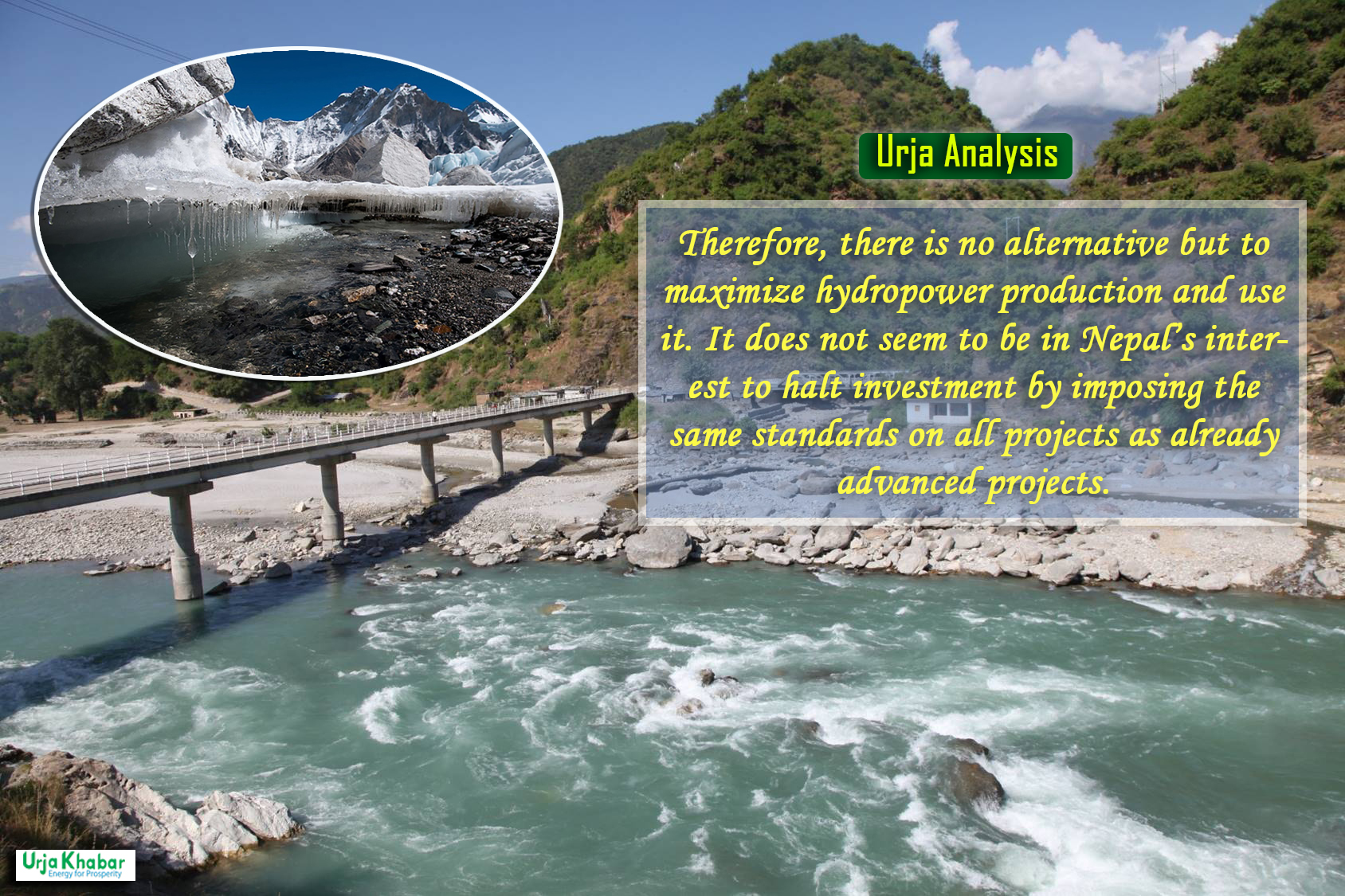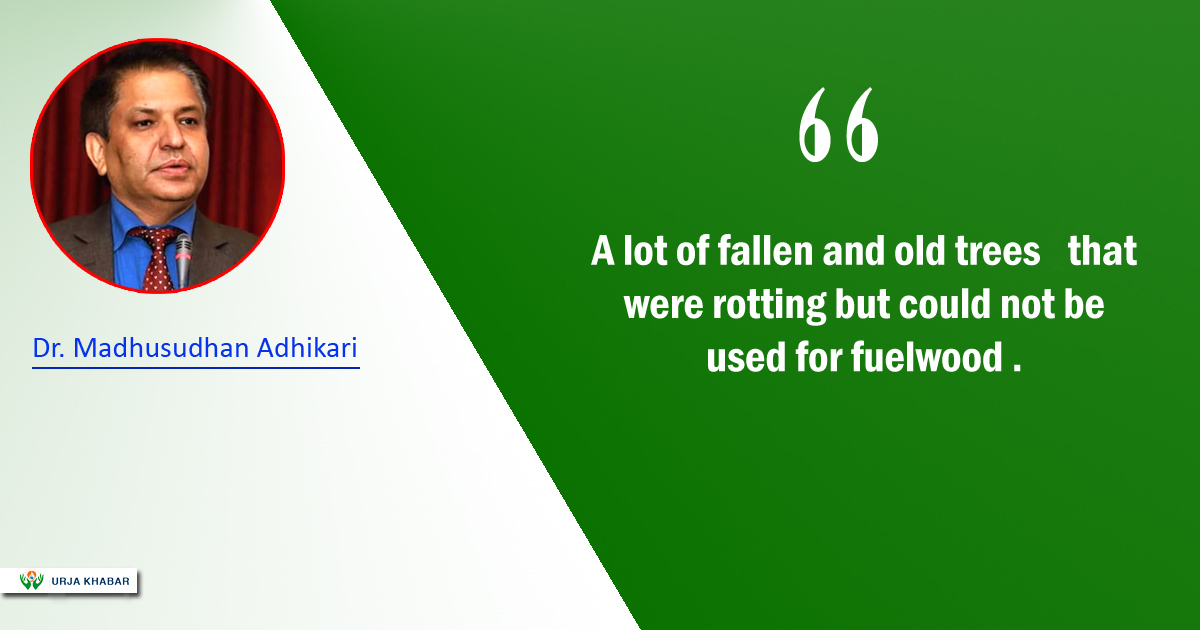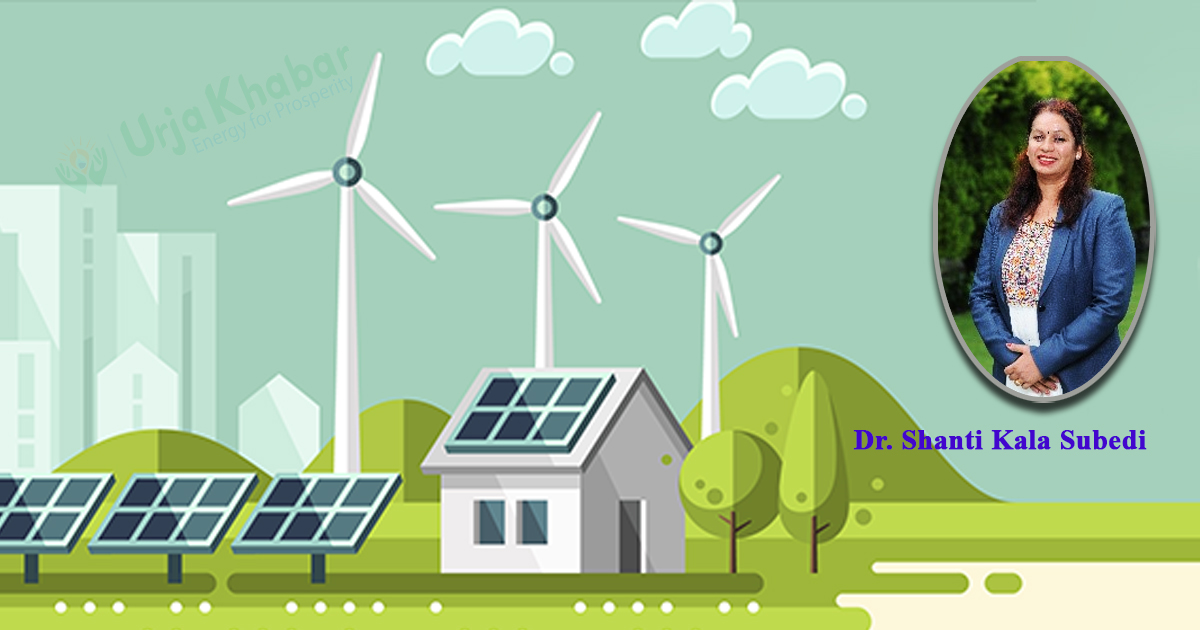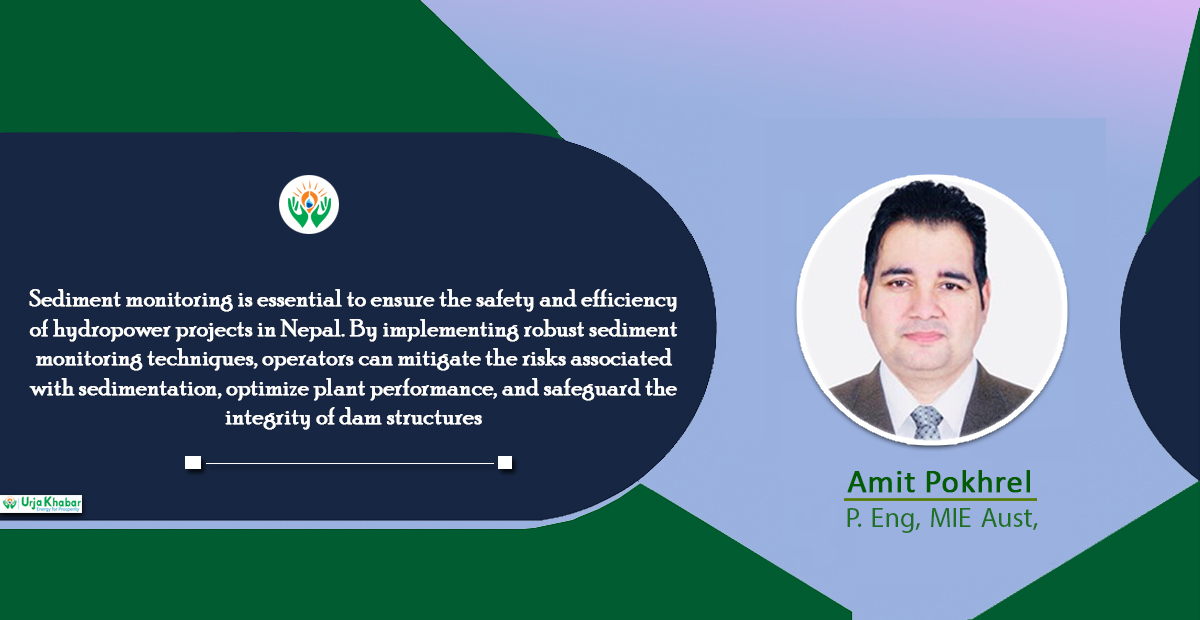Energy Update
Urja Analysis
Misnarratives About Nepal's Hydropower and Barriers to FDI

There are over 6,000 rivers, large and small, flowing continuously in Nepal. The flow of these rivers never stops, even for a second. They flow at their own pace and merge into the Ganga before reaching the sea. The faster we can utilize this flowing water for electricity generation, the sooner the country’s prosperity seems achievable. In other words, the longer we delay in developing hydropower, the slower the country's development progresses. Therefore, it is not in the country's interest to delay harnessing the vast water flow provided by nature through large and reservoir-based projects. One of the significant examples that confirms this fact is the Arun III Hydropower Project.
When the Arun III project was first initiated around 2051 BS (1994 AD), political controversies and doubts about the project led to substantial economic and social losses for the country over the next three decades (there is a separate story to this). After nearly 3.5 decades, the project is now progressing rapidly, and the country is poised to benefit from it. Hence, any disputes arising in the development of large-scale hydropower projects or those that could attract foreign investments lead to more backwardness and poverty rather than development and prosperity.

On the other hand, advancements in science and technology have made cheaper and more accessible electricity production, like solar power and green hydrogen, which may eventually lead to the irrelevance of hydropower. This issue emphasizes the need for Nepal and the Nepali people to attract investments in hydropower to benefit from the flowing water as much as possible.
Lack of Investment and FDI

During the tenure of the previous government led by Pushpa Kamal Dahal, Shakti Bahadur Basnet, the Minister for Energy, Water Resources, and Irrigation, prepared a draft 'Energy Development Roadmap and Action Plan 2080' with a target of 28,500 MW over 12 years (until 2035), which was made public on 31 March 2023. The plan projected to export 15,000 MW to India and Bangladesh and consume 13,500 MW domestically. The estimated investment required was 46.5 billion USD (62 billion NPR). Even if we consider that draft, managing 62 billion NPR in internal capital within 12 years seems like a tough task.
During Minister Basnet’s tenure, a long-term energy trade agreement was made to export 10,000 MW of electricity to India within 10 years. Similarly, Nepal has an international commitment to achieve net-zero carbon emissions through renewable energy use by 2045. To meet this targets, and commitments, Nepal must attract and encourage foreign direct investment (FDI). This requires creating a profitable environment for foreign investors in Nepal. Investors should find a streamlined permit system and an investment-friendly environment without numerous legal and procedural hurdles. However, Nepal has not been able to create such an environment.
Tremendous Advancements and Indian Investment
So far, only Indian investment is moving forward with the construction of seven projects totaling 4,783 MW in Nepal, which exceeds the total installed power capacity of 3,200 MW achieved in Nepal’s 113-year history of electricity production. Among these, some projects, including Arun-3, are in progress, while others are in the preparatory phase before construction. The Indian company Satluj Jal Vidyut Nigam (SJVN) alone is advancing three projects with a total capacity of 2,069 MW through its subsidiary companies.
Similarly, NHPC Limited is responsible for constructing three projects with a total capacity of 1,824 MW. The Indian company GMR Group is working on the Upper Karnali Hydropower Project with a capacity of 900 MW through its subsidiary GMR Upper Karnali Hydropower Limited. Facilitating these projects and creating a favorable environment for their construction could significantly transform electricity development in Nepal.
Key Hydropower Projects Led by Indian Companies
| Project | Capacity (MW) | Estimated Cost (NPR) | Indian Company |
| Arun-3 | 900 | 115 billion | SJVN |
| Lower Arun | 669 | - | SJVN |
| Arun-4 | 490 | - | SJVN |
| West Seti | 750 | 180 billion | NHPC Limited |
| Phukot Karnali | 624 | 92 billion | NHPC Limited |
| Seti River (SR)-6 | 450 | 10 billion | NHPC Limited |
| Upper Karnali | 900 | 118 billion | GMR Group |
| Total | 4,783 |
Free Electricity and Economic Viability
On 19 September 2014, the Investment Board Nepal (IBN) signed a Project Development Agreement (PDA) with GMR Limited for the 900 MW Upper Karnali. The initial investment estimate for the project was 118 billion NPR. According to the PDA, Nepal was supposed to obtain 12% of the electricity and 27% of the equity free of cost. The project was required to be completed and transferred to Nepal by 2046. However, strong opposition from those viewing the project as a 'betrayal against the nation' led to demands for the cancellation of the PDA, litigation, and even bombings at the project site. The company also failed to secure the investment, and an environment conducive to the project’s construction was not created. As a result, Nepal missed out on potential economic benefits.
Similarly, on 25 November 2014, a PDA was signed with SJVN for the 900 MW Arun-3. However, the same expectation of free electricity was placed in this agreement as in Upper Karnali. Nepal was to receive a total of 21.9% free electricity, amounting to 197.1 MW, and local peoples were to receive 30 units per month. Despite these benefits, after 25 years of operation, the investors will have to hand over the project to the government in its current state, showing limited profit prospects. Although the projects were considered somewhat cheaper (costing about 12-13 crores per MW) and agreements included provisions for free electricity and shares, now Arun-3 is progressing towards completion.
Furthermore, an interpretation has now been established that the expectation of free electricity and shares in all large hydropower projects has become a standard according to these agreements. This will certainly not ease the entry path for Indian investors to Nepal. For instance, Indian company NHPC, which has been granted permission for the construction of the 750 MW West Seti and the 450 MW Seti River-6 (SR-6) projects, is also expected to provide similar benefits. Similarly, NHPC's 51% shareholding in the 480 MW Phukot Karnali peaking reservoir project has led to similar demands for free electricity.
Demanding free electricity and shares from all projects, regardless of their location, topography, nature (ROR, PROR, Storage), design, dam structure, and investment return, creates an environment that discourages foreign investment. The government, investment board, general public, and all stakeholders need to develop an appropriate view on this issue. Comparing the previous Arun-3, and the currently advancing Phukot Karnali, this is essential.
Comparison of Arun-3 and Phukot Karnali
During Prime Minister Dahal's visit to India in Jeth 2080 BS (June 2023), the responsibility for constructing the 624 MW Phukot Karnali semi-reservoir (PROR) hydropower project was handed to NHPC with a 51% shareholding. This project is expected to be developed jointly by two companies from Nepal and India, with the remaining 49% of shares held by Nepal’s Electricity Producing Company. The project’s capacity has been increased from the initially planned 480 MW to 624 MW.
The dam of Arun III is 59 meters high from the river surface, while Lower Arun's dam is 80 meters. In contrast, the Phukot Karnali dam is designed to be 109 meters high. The geographical location of Phukot Karnali is more remote, requiring the construction of a significant tunnel in challenging terrain, leading to higher costs. The cost per MW for Arun III is 124.4 million NPR, while Lower Arun is estimated at 138.5 million NPR. In comparison, Phukot Karnali’s cost is estimated at 186.6 million NPR (117.7 billion NPR). Thus, the construction cost of Phukot Karnali is 36-52% higher compared to Arun III and Lower Arun.
The higher production cost makes it challenging to compete in the Indian market. Currently, solar power prices in India are significantly low, around 2 rupees (Indian) per unit. However, the price of electricity from Phukot Karnali needs to exceed 5.50 rupees (Indian) (8.80 NPR) per unit to be profitable. This price makes it difficult to secure long-term power purchase agreements with Indian buyers.
These facts indicate that demanding free electricity and shares at the level of Arun III may not be feasible for all project investors or developers. If projects are not advanced without providing free shares, a conducive environment for major investors like NHPC to participate in large projects in Nepal cannot be created. On the other hand, the benefits the country gains from such large projects during their construction, such as energy royalties, employment, local infrastructure development, and organized settlement development, can be many-fold greater compared to the projects themselves. For instance, these projects need to pay energy royalties at a rate of 10% for the first 15 years from the start of electricity production and 15% for the next 10 years, leading to significant sums.
Similarly, during the construction of the project, the Nepalese government will earn customs duties, value-added tax (VAT), and other taxes amounting to NPR 4 billion annually, totaling NPR 20 billion over 5 years. After construction, the government will receive energy royalties at a rate of NPR 2.2 billion per year. Therefore, it appears essential for Nepal to attract foreign investment for hydroelectric 'mega projects' without any hesitation.
As Much Delays, As Much Challenges
The government has prioritized hydroelectricity power for Nepal's prosperity. However, it can be assessed that if its development and utilization are delayed, its relevance might weaken in the near future. Recently, the prices of panels, batteries, and other equipment used in solar power production have dropped significantly. This means that technological advancements have made solar energy increasingly affordable. Similarly, green hydrogen energy is becoming robust as a fuel in various sectors like transportation and cooking. Successful tests with hydrogen for vehicles and cooking have already been conducted in Nepal. Many countries are also beginning preparations to convert excess electricity into hydrogen and distribute and use it as ammonia.
On the other hand, the impacts of global climate change, such as accelerated glacier melting in Nepal, have led to alarming predictions about the future flow of Nepal’s rivers. Therefore, there is no alternative but to maximize hydropower production and use it. It does not seem to be in Nepal’s interest to halt investment by imposing the same standards on all projects as already advanced projects. Creating an environment where companies like NHPC can invest in large hydroelectric projects to transform Nepal’s prosperity seems necessary. Special initiatives by the government in this direction may accelerate the country’s journey towards prosperity.
Conversation
- Info. Dept. Reg. No. : 254/073/74
- Telephone : +977-1-5321303
- Email : [email protected]














